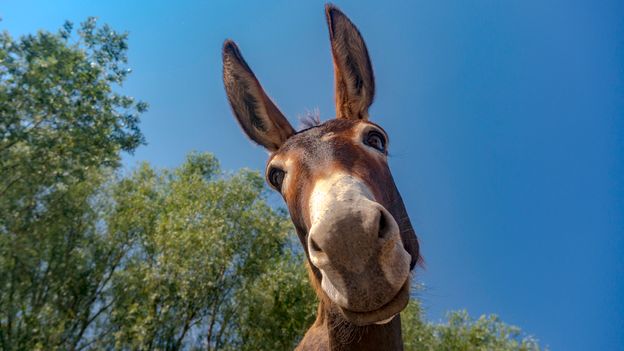- Arvind's Newsletter
- Posts
- Arvind's Newsletter
Arvind's Newsletter
Issue No. #1045
1.Indian manufacturing ends strong 2024 with a soft note, Dec PMI at 56.4
Manufacturing Purchasing Managers’ Index (PMI) fell to 56.4, a 12-month low, according to the HSBC India Manufacturing PMI compiled by S&P Global.
It stood at 56.5 in November. This was the slowest growth since December 2023 when it was at 54.9. “Rates of growth remained substantial, however, underpinning further expansions in buying levels and employment. Meanwhile, cost pressures receded and were mild, but charge inflation remained historically high,” the survey said.
2.PLI schemes to boost revenue of 720 companies by $459 billion over next 5 years: Goldman Sachs
According to a Goldman Sachs report, the central government's Production-Linked Incentive (PLI) schemes have the potential to generate an additional $459 billion in revenue over the next 5-6 years, benefiting more than 720 companies.
The total incentive payments approved by the government to Mahindra & Mahindra and Tata Motors under the Production Linked Incentive (PLI) scheme for the auto industry. was Rs 246 crores. According to The Economic Times, Mahindra & Mahindra received Rs 104.08 crore and Tata Motors Rs 142.13 crore.
Tata Motors' earnings came from sales of Tiago EV, Starbus EV and Ace EV, while M&M’s were linked to electric three-wheelers like Treo. Covering 2023-24 to 2027-28, the scheme promotes advanced automotive technologies like EVs and hydrogen fuel cells, offering incentives of 8 –18%.
3.Entry level e-scooters are driving growth of the electric 2-wheeler market.
By the latter half of 2024, monthly sales of electric scooters in India surpassed 100,000 units on average – a pivotal milestone for the sector – rising from a monthly run rate of around 70,000 units in 2023
According to the Vahan database, this growth was spurred by leading brands like Bajaj Auto, Ola Electric, and TVS Motor introducing affordable electric scooters that achieved price parity with traditional internal combustion engine (ICE) scooters.
Ola Electric pioneered affordability with its S1 X launched in December 2023 at a price below INR1 lakh. This was followed in June 2024 by Bajaj with its economy e-scooter model priced at INR 96,000.
4.Tesla’s annual sales declined last year for the first time in a decade.
Tesla’s vehicle sales fell in 2024 for the first time to 1.79 million, even after a record fourth quarter. The miss reflects a “relatively aged product” and more competition, Morgan Stanley said. Elon Musk’s carmaker still edged out Chinese rival BYD, which delivered 1.76 million EVs last year.
BYD, however, sold more electric vehicles than any other company in the fourth quarter of 2024. Other Chinese EV makers also saw significant growth. Recent wobbles in the EV market have not changed the overall direction of travel: India saw 27% sales growth in 2024, falling just shy of 2 million units sold, according to government data, while in Norway almost 90% of all cars sold last year were electric.
An industry spokesperson told Reuters that “Norway will be the first country in the world to pretty much erase petrol and diesel engine cars from the new car market.”
5.Feeling unmotivated? Use “Skinner’s Law” to get yourself back on track
You know that moment when you finally stop procrastinating a task and say, “Screw it, I’ll do it!”? That might not always be a sudden burst of personal willpower. It could be that you reached a tipping point between pain and pleasure: the stress of not doing the task finally began outweighing the temporary relief that came with avoiding it. “Skinner’s Law” offers a more proactive way to beat procrastination, offering two ways to tweak these pain and pleasure dynamics to motivate yourself more effectively.
6.Eight ways to stay happier this year, according to science
Why not try these science-backed tips to get more happiness in your life?
Some people are born to be happier than others. But whether you're the kind of person who sings in the shower and dances in the rain, or of a more dour inclination, contentment isn't just something that happens to us. We can all change our habits to coax more of it into our lives.
So, here are the top tips for a happier 2025.
7.After a difficult decade that included terror attacks and bitter protests, Paris is thriving, Rachel Donadio argued in the New York Review of Books.
The French capital has transformed into “a more global and more dynamic city, enlivened by an infusion of restless cosmopolitans, many of them Anglophone.”
While the city is more open, it’s not too open, with limits on Airbnb rentals intended to keep the city from turning into a playground for tourists and digital nomads.
New cultural institutions are riding on the success of luxury conglomerate LVMH, and Netflix series Emily in Paris is driving fashion tourism. Notre Dame has reopened, the Bataclan is hosting concerts again, and “Paris’s scars have become part of its cityscape,” Donadio wrote.
8.How to build a more sustainable refrigerator
A new kind of heat-absorbing crystal could hold the key.
A new type of crystal could enable refrigerators and air conditioners to keep us cool without warming the planet.
Refrigerators and air conditioners get their cooling power by circulating a liquid through the device, which absorbs heat and causes chilling through a cycle of evaporation and condensation. But many such liquids contribute to the greenhouse effect, causing further warming when they leak. Now, Jenny Pringle at Deakin University in Australia and her colleagues have made a climate-friendly alternative to these liquids using “plastic crystals” – crystals with molecules that can move just enough to make them pliable.
9.Abu Dhabi’s Mubadala emerged as the world’s top sovereign investor in 2024.
The fund deployed $29.2 billion across 52 deals — a 67% rise from the previous year, according to consultancy Global SWF. Its Gulf peers weren’t far behind: Abu Dhabi Investment Authority, ADQ, Saudi Arabia’s Public Investment Fund, and Qatar Investment Authority all ranked among the top 10 global dealmakers.
Allocations shifted significantly, with increased focus on real estate, technology, financial services, private equity, and private credit, while health care, industrials, and consumer sectors saw declines.
Among the big telecom deals were PIF’s $3 billion acquisition of TAWAL, the Middle East’s largest tower operator, while spending on local AI companies and US startups ramped up. The space race is also heating up: Mubadala’s Space42 and PIF’s Neo Space Group are positioning their countries as emerging leaders in satellite industries.
10.Why you’re not on holiday in India right now; The Economist
SEEING THE Taj Mahal was on Bram van der Meij’s bucket list. His wife, however, could not stomach the idea of the long journey. So the 75-year-old Dutch-American made the trip on his own. He took in the “golden triangle” of Delhi (which boasts fine food and architecture), Agra (the Taj Mahal) and Rajasthan (palaces, forts, arts and crafts), before spending a few days in Kerala.
Before all that, though, Mr Van der Meij found himself making a detour to Nepal because of complications with his Indian visa. When he did make it to India, the country’s bureaucracy and heavy-handed airport security were off-putting, while the traffic and pollution were enough for him to decide against returning soon.

Mr Van der Meij is the sort of tourist most countries fight over: someone who is genuinely enthusiastic, visits for a long time, seeks to travel in comfort and is willing to splash out a bit. And India, with its 43 UNESCO World Heritage Sites, rich history, natural beauty and many delicious cuisines, should be a magnet for travellers. Yet the continent-sized country is an underachiever as a destination. Foreign tourist arrivals peaked in 2019 at 10.9m. That year Dubai (World Heritage Sites: zero) attracted 16.7m visitors. In the first half of 2024 Dubai’s numbers grew by 11% compared with 2019. India’s fell by 10%.
Overseas tourism is booming around the world, but India is being left behind. Most countries see tourism as a valuable export industry that generates foreign exchange, taxes and employment. It contributes about a tenth of global GDP and accounts for one in ten jobs. Many countries in Asia and the Middle East—including places such as Uzbekistan and Saudi Arabia, which until recently were closed to tourists—are falling over themselves to make it easier for tourists to visit. Several have abolished or eased their visa regimes.
India, on the other hand, closed its few remaining overseas tourist offices in 2023. The budget for tourism promotion abroad was slashed by two-thirds from 1bn rupees ($12m) that year to just 330m rupees in 2024. Though domestic travel is booming, tourism’s contribution to GDP declined from 5.8% in 2002-03 to 5.2% in 2019-20, according to the government’s figures. Rajiv Mehra, the president of the Indian Association of Tour Operators, an industry group, complains that the government “thinks that India is such a destination that people will come running on their own”.
Indeed, the government is targeting 100m annual foreign tourist arrivals by 2047. That implies an average growth rate of 15% every year, well above the 8.5% between 2001 and 2019. By then, it is possible that India will have tackled some of the big, chronic problems identified by Mr Van der Meij and which affect all Indians, not just visitors. But there are plenty of things the government could do immediately.
The most important is marketing. India needs “to be in the consideration set of tourists when they are choosing a destination”, says Pushan Sharma of CRISIL Market Intelligence and Analytics, a research outfit. This includes traditional efforts such as advertising and attending trade fairs, but also inviting social-media influencers, who wield enormous clout among youngsters, to visit the country.
Next, having intrigued travellers, India must make it easier for them to visit. To its credit, the government replaced the onerous process of applying for visas in person with online e-visas. But that was a decade ago and the process remains unpredictable and fiddly; it requires using a website that looks like it was designed during the dot-com boom. Most countries in South-East Asia and the Middle East have slicker sites. Many offer either visas on arrival or visa-free entry.
Lastly, it is important to make life easier for tourists when they do arrive. India has made great leaps in digital infrastructure. Modern airports in big cities are equipped with biometric gates that make it easier to get through the multiple checkpoints. Electronic gates are speeding up passport control. But these things work only for Indians, infuriating foreign travellers.
Getting first-timers into the country is crucial. Most visitors, despite the hassles, have a good experience, says Neil Patil of Veena World, a tour operator. Along with social media, recommendations from friends and family are the chief reason people decide to travel to a given destination. One happy tourist can net another five, reckons Mr Sharma. Even Mr Van der Meij, despite his sub-optimal experience, would like to return once India has fixed some of its problems. But “by then I will be 95 and I will be happy to know what day of the week it is,” he says. Next time, he’s going to Japan. ■









